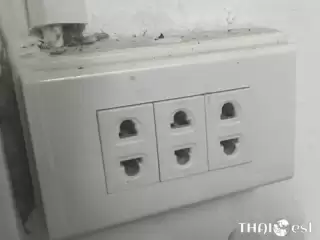I remember speaker wire was standard wiring. The amount of wires coming out of transformers was amazing. Seemed to be no standards and self taught, not apprenticed.
This was on the Thai air base barracks that used to be US based during the late 60s and early 70s. It was the same in the villages and towns.
Has this changed?
That "speaker wire" as you call it certainly still exists, but is less common now. In Laos it is still quite common. I watched a fair length of it burn up after a week or two of powering a well pump, and, no, I was not the one who installed it! It works great for LED lights--but certain brands of it are highly prone to oxidation/degeneration, and may not conduct current for more than a year.
GFCI breakers are virtually unknown here and hard to find. I have not so much as heard of electrical inspections here--but I think there may be some standards these days for commercial construction like schools which do get inspected by the education department, or hospitals which probably are inspected by the health department, etc.
The massive wire tangles dangling from utility poles have become infamous, and I've heard Bangkok is beginning to transition to underground wires. Hopefully that cleans things up a bit. There are some wonderful (i.e. hilarious and/or pathetic--depending on one's perspective) photos of Thai wiring issues to be found online. I'm amused by the ones that show a utility pole in the middle of a roadway, with the asphalt or concrete carefully packed around it on all sides.

(Of course, that's not the only reason Thailand has become #1 among peacetime countries for traffic fatalities.)
The "standard" Thai plug has probably not changed much. Here's a classic example--the first to appear in a Google images search for "Thai electrical outlet":
As can be seen, either round plugs or flat plugs are accommodated easily....but, sorry, no ground prongs. This design is why I am not keen on the dual-voltage idea, besides the fact that I have lost valuable tools to the ease of plugging them in to the wrong voltage (others, not myself, were inattentive to the details...but it matters not who did it, the damage is still done).



